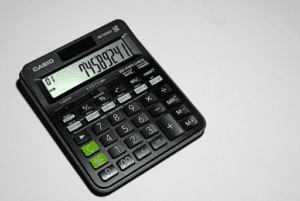If you’ve been paying attention lately, you may have heard tell of the red-hot residential real estate market across the United States. All of a sudden, home values have skyrocketed—leaving some current owners shocked at double-digit increases in home equity. A combination of factors, including low-interest rates, scarce supply, and high demand, have allowed homes to appreciate exponentially—as much as 10% year over year.

Realtors report homes on the open market for less than a day, receiving dozens of offers, the majority of which far exceed the asking price. In some cases, prospective buyers have put in all-cash offers, sight unseen, even foregoing the traditional home inspection and valuation process. The inside joke these days is that you can sell your house for a killing, but as soon as the ink is dry, you’ve priced yourself right out of your own neighborhood!
What we’ve just discussed is called valuation. And it works the same with small businesses and franchises. The focus of this month’s blog in partnership with FRANdata is how franchises are valuating in a post-Covid environment. The following information was compiled by Steve Mize, founder and partner of GCF Valuation, the nation’s leading provider of SBA-compliant valuations. We summarize the findings of his recent report below, but you can read the full excerpt here.
The Formula
Valuations are determined with a pre-set formula, based on two variables. The first is cash flow to the owner, and the second is a required rate of return based on the investment’s risk. As Mize states, for small businesses and franchises, it’s typical to take the seller’s discretionary earnings (SDE) and multiply them with a multiplier (inverse of a % rate of return): He cites the following example:
$250,000 of SDE (x3) = $750,000 in value.
Value Holds Serve, But Cash Flow Suffered
According to the research, the rate of return for small businesses and franchises hasn’t changed significantly. Pulling peer comps for all franchises sold in 2019 vs. 2021, there was only minimal change in the total valuation. Cash flow, however, was a different story. Without a doubt, many franchise operations suffered under the restrictive nature of lockdowns and social distancing—especially the restaurant and hospitality industry. Other franchise concepts—such as handyman and printing/signage businesses—actually flourished, despite the pandemic’s effect.
What Mize found overall, was that regardless of how profound the cash flow problem was, there seemed to be a direct correlation between variable restrictions of local governments and municipalities, state by state and city by city. And due to the wide-ranging revenue models across hundreds of franchise concepts, he proposes that future valuations shouldn’t necessarily rely on the weight of historical performance while using a reasonable “cap rate” or multiplier. To get the most accurate picture may require a solution that’s not as complex, but investigates whether revenue projections, on a case-by-case basis, have once again returned to normal benchmarks.
The findings are certainly some food for thought for both current and prospective franchise owners. By design, franchised business opportunities lend themselves to perform like an investment asset. Whether to hold, sell, or one day choose a legacy succession for your franchise operation remains an asset on the owner’s books. Because a business you own, will always be a business you can sell.
If you’d like to discuss a current valuation of your franchise operation, or this information has piqued your curiosity about franchise ownership, make a no-cost, no-obligation appointment with a qualified FranNet representative who both lives and works in your area. A personal Entrepreneurial Readiness Profile is patiently waiting for your input, and it could determine a future that includes the flexibility and freedom that comes with being your own boss.

